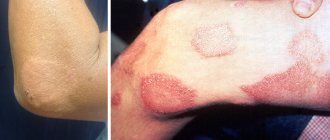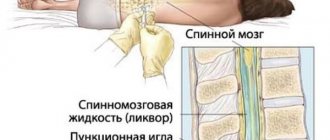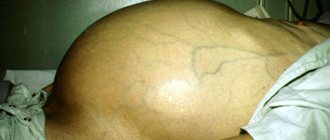Parkinson's disease is a chronic, long-term disease of the nervous system, accompanied by the death of motor nerve fibers that produce the neurotransmitter dopamine. Parkinson's disease mainly affects older people. It occurs in 120–180 people per 100 thousand population.
Ignoring the initial symptoms of parkinsonism leads to serious consequences. 7-10 years after the onset of the disease, more than 50% of patients who did not start taking regular treatment on time become disabled and require constant care. Timely treatment begins to promote survival in Parkinson's disease, maintaining the patient's physical capabilities for a long time.
- Neurologists at the Yusupov Hospital conduct a comprehensive examination of patients for the presence of parkinsonism using the latest equipment from the world's leading manufacturers.
- At a meeting of the expert council with the participation of doctors of the highest category, professors and associate professors, severe cases of the disease are discussed.
- Leading specialists in the field of neurology establish a final diagnosis and individually select for each patient the most effective medications and non-drug therapy methods that completely or partially solve the causes or complications of parkinsonism.
What is Parkinson's disease?
Parkinson's disease is a degenerative change that occurs in the central nervous system and tends to progress at a slow rate. The symptoms of the disease were first described by the doctor D. Parkinson in 1877. At that time, he defined the disease as shaking palsy. This is due to the fact that the main signs of central nervous system damage are manifested in limb tremors, muscle rigidity and slowness of movements.
As for statistics, the disease affects 0.4% of the population over 40 years of age. Older people, namely those over the age of 65, are more likely to encounter this problem, in about 5% of cases. Parkinson's disease affects 1% of the world's elderly population under 60 years of age. Rarely, but still there are juvenile forms of the disease, when the onset occurs in childhood. In this case, doctors talk about juvenile parksinsonism. As for gender, men are more susceptible to the disease than women.
Life expectancy with Parkinson's disease
The life expectancy of a person suffering from Parkinson's disease, according to the earliest studies conducted by the Japanese, is about 7.4 years. However, recent data indicate that this figure is significantly underestimated.
It directly depends on a number of factors, namely:
- from early initiation of therapeutic treatment
- from the patient's country of residence
- on the quality of patient care
- from timely diagnosis, etc.
Recent data indicate that the disease is definitely progressing, but its development can be slowed down.
Some researchers come to the conclusion that a disease that starts at a young age does not affect life expectancy. Research carried out in Britain offers hope for young people with Parkinson's disease, indicating that if the disease starts before the age of 40, the average life expectancy is 39 years. This suggests that a person will be able to live to a ripe old age. If the age of the patient varies from 40 to 65 years, then life expectancy with proper care is 21 years. At older ages, the disease progresses faster and, on average, people live 5 years from the moment of diagnosis. However, it should be taken into account that fatal diseases, such as pneumonia or problems with the heart and blood vessels, appear in a person by the age of 70 and without Parkinson's disease.
Is Parkinson's disease inherited?
Geneticists have been studying the question of whether Parkinson's disease is inherited for a long period of time.
However, there are certain obstacles to formulating a precise answer to this question:
- Firstly, the manifestation of the disease often occurs at a late age, to which many family members simply cannot survive.
- Secondly, studies show that in one country, for example, Bulgaria, family history of the disease occurs in 2.5% of cases. In Sweden and Norway, the disease is more common in people with blood type 0, but in Finland, on the contrary, there are no such patients. Therefore, it is not possible to determine what exactly influences the development of pathology - genetic predisposition or place of residence, or blood type, or other factors.
- Thirdly, it is impossible to study the causes of hereditary transmission of the disease in animals, since they do not have the necessary gene and the disease does not develop in them.
However, many scientists have stated and continue to state that the disease is inherited, although so far no scientific evidence has been presented. Contrary to these claims, other researchers point out that a very small number of people with Parkinson's disease have close relatives with a similar pathology. However, the disease is more common in those families where it manifests itself at an early age.
Juvenile parkinsonism deserves special attention. It is hereditary and occurs between the ages of 6 and 16 years. The disease progresses very slowly and does not lead to disturbances in memory and functioning of the autonomic nervous system. Thus, the most reliable conclusion that modern scientists have come to is that the hereditary form of the disease manifests itself in every tenth patient.
The first signs of Parkinson's disease
It has long been established that non-motor symptoms are the first signs of the development of the disease, and can show themselves several years before the development of the main symptoms.
Among them are the following:
- Hyposmia. Hyposmia means that a person's sense of smell is impaired. The symptom occurs in 80% of patients with Parkinson's disease.
- Depression. In some patients, it is accompanied by anxiety and manifests itself many years before the onset of the disease.
- Constipation is observed as an early sign of the disease in more than half of people. The act of defecation occurs less than once per day.
- Sleep disorders. They are characterized by frequent screams, falls from their sleeping place, and involuntary movements of the arms and legs. These disorders manifest themselves in the phase of sleep that occurs during rapid eye movements.
- Disorders in the genitourinary system.
- Apathy.
- Increased fatigue. Due to the resulting loss of strength, it becomes more difficult for the patient to perform daily duties: prepare lunch, clean, and even take care of himself.
So, the first signs of the development of the disease are determined by disorders in various areas: sensitive, neuropsychic, autonomic. This is due to the fact that until the pathological process reaches the substantia nigra, it will first have an impact on the extranigral structures of the brain. These are the olfactory system, the peripheral parts of the autonomic nervous system and the lower parts of the brainstem.
Among the motor disorders at the initial stage of the disease, changes in handwriting can be identified. The letters become smaller, and a person cannot clearly identify them.
Twitching of the fingers and muscle stiffness of the face may be present. This is expressed in the fact that it becomes like a mask: the person blinks less, speaks more slowly, and his speech becomes not entirely intelligible to the people around him. Symptoms are somewhat worse when a person is nervous or stressed. As the patient calms down, the symptoms of the disease completely disappear. A symptom of restless legs is often observed when a person makes involuntary shuffling movements while resting at night.
The difficulty of diagnosis lies in the fact that the first signs are very difficult to notice, since most often a person attributes them to natural processes occurring in the body and does not seek help from a doctor. In addition, from the moment the first signs appear until the appearance of pronounced symptoms, a rather long period of time passes. Therefore, even if a person goes to a doctor, he is often treated for other diseases, erroneously making an incorrect diagnosis.
Hen-Yar classification
English doctors Margaret Hen and Melvin Yahr developed a classification of Parkinson's disease in the mid-20th century. It is still used in clinical practice today. After all, the stages are described in detail. They help the treating doctor navigate the prescription of therapy. In addition, the Hoehn-Yahr scale accurately describes the patient's signs of disability. This means that in the final stages a person needs help and cannot care for himself.
Important! The classification has been slightly modified. Later, stages 0, 1.5 and 2.5 were added to it.
Classification criteria
- Presence of symptoms of Parkinson's disease;
- Manifestation of the clinic on one side or both sides. Is the torso involved?
- Presence of postural instability;
- Ability to overcome inertia of movement;
- Self-care ability;
- Ability to stand and walk with assistance.
Quality of life cannot be assessed using the Hen-Yar classification. There is a Unified Rating Scale (UPDRS) for this purpose. It covers a wide range of criteria from sleep disorders to speech problems and depression. However, general practitioners and neurologists rarely use it. After all, such testing is labor-intensive and requires special training of a specialist.
Hen-Yar scale
| Stage | Manifestations |
| Zero | There is no clinic. At the same time, processes of neurodegeneration may already be actively occurring in the brain. |
| First | There is a clinic on one of the limbs. |
| Stage 1.5 | There are symptoms on the trunk and limbs. |
| Second | Bilateral body involvement. |
| Stage 2.5 | In addition to symmetrical symptoms, postural instability appears. But the ability to overcome the inertia of movement remains. |
| Third | Pronounced clinical picture of the disease. But the patient takes care of himself. |
| Fourth | Need help at home. The ability to walk and stand without support remains. |
| Fifth | Severe disability. Inability to walk or stand up. |
Symptoms of Parkinson's disease
Symptoms of the disease are expressed primarily in movement disorders. However, there are other manifestations of pathological changes in brain structures.
The full range of symptoms is as follows:
- Tremor of the limbs. This symptom cannot be ignored. It manifests itself in a state of rest, but sometimes other types are present, in particular, postural tremor. It is characterized by the fact that the limb trembles if they try to hold it in a certain position. Sometimes with Parkinson's disease, intention tremor appears, tremors in which have a motor pattern. The following picture is often observed: the patient’s rest tremor is distinguished by rough movements, postural tremor is much weaker, and intention tremor is present, but very weakly expressed. Similar symptoms are characteristic of tremulous forms of parkinsonism.
- Rhythmic trembling of the eyelids, jaw and tongue.
- Muscle stiffness. This symptom is weakly manifested in the initial stages of the disease and is more pronounced in its later stages. The muscles are in constant tension. Due to increased tone, a person eventually develops the so-called “supplicant pose.” The back is stooped, the arms and legs are bent at the knees and elbows. Due to constant tone, the patient experiences characteristic muscle and joint pain.
- Hypokinesia. This symptom manifests itself in slowness and a decrease in the number of all movements and is present in any form of the disease. At the same time, the speed of actions performed decreases, and the amplitude of movements decreases. Speech, plasticity, facial expressions, and gestures suffer.
- Postural disorders. They manifest themselves in Parkinson's disease in that a person's gait and posture are modified. It becomes increasingly difficult for the patient to maintain his center of gravity, which causes frequent falls. To make a turn to the side, a person first marks time in one place. The gait becomes shuffling and mincing.
- Drooling is another symptom of the disease. Due to an increase in the volume of saliva, a person’s speech becomes slurred and the ability to swallow becomes difficult.
- Impaired intellectual abilities. Attention, memory, speech, thinking, and logic suffer. Learning ability decreases and personality changes may occur. This symptom is called dementia, although in some forms of the disease it does not manifest itself, but if it begins to develop, it progresses steadily.
- Depression becomes a constant companion of the patient and takes on a chronic form.
- In men with Parkinson's disease, impotence develops.
Surgical intervention
In rare cases, specialists may decide to prescribe surgery for a patient. This usually occurs in the later stages of parkinsonism, when taking medications does not produce positive changes. Early surgery on a patient can lead to serious health problems, so this option is not practiced in surgery. There are three types of surgeries used to treat Parkinson's disease:
- thalamotomy;
- pallidotomy;
- neurostimulation.
Causes of Parkinson's disease
In order to determine the causes of the disease, it is worth understanding the processes of transmission of nerve impulses. In the depths of the brain there is a zone of the basal ganglia. If a person needs to perform a certain action, for example, take a step, the nerve cells coordinate this action with the ganglia and the body position changes. The ganglia process the received signal and transmit it along the nerve pathways to the thalamus, which then returns to the cerebral cortex.
If the disease begins to develop, the cells that form in the ganglia degenerate, the production of dopamine decreases (it is the main conductor of signals between nerve cells), nerve connections are disrupted and gradually lost. This causes the development of symptoms of the disease. Often the causes of nerve cell degeneration remain unclear, and the disease is called idiopathic.
On the subject: Foods that increase dopamine levels
Among the causes leading to the development of the disease that can be identified are the following:
- Parkinson's disease is a late complication of viral encephalitis.
- Taking antipsychotic drugs, which are often used to treat schizophrenia or paranoia. The development of the disease is due to the fact that these drugs block the production of dopamine, disrupting the connection between nerve cells.
- Taking opiate drugs.
- The effects of large doses of manganese on the body. Therefore, the disease often develops in miners.
- Exposure of the body to high concentrations of carbon monoxide.
- Natural aging of the body, as a result of which the process of neuron production decreases.
- Suffered brain injuries. Particularly dangerous are frequently repeated injuries, such as those suffered by boxers.
- Vascular atherosclerosis.
- Brain tumors.
The role of hereditary factors in the development of the disease remains questionable.
On the subject: 3 methods to cope with Parkinson's disease
Stages of Parkinson's disease
The disease does not occur spontaneously; it progresses slowly and during this time passes through six stages of development. Each of them has characteristic symptoms and manifestations:
- Stage zero is different in that the disease does not reveal itself in any way, however, it has already begun to develop and affect certain areas of the brain. It is at an early stage that forgetfulness, absent-mindedness, changes in the sense of smell and other signs begin to progress.
- The first stage is characterized by the fact that the disease manifests itself unilaterally. That is, the limbs are affected on one side. However, even at this stage, patients rarely seek help, since the symptoms are mild. The tremor is barely noticeable and intensifies only with nervous excitement. However, attentive relatives and friends may notice that a loved one’s posture, speech, and facial expressions have changed somewhat.
- The second stage is different in that the symptoms of the disease manifest themselves bilaterally. At the initial stage, signs of postural instability are subtle, but as the disease progresses they begin to appear. The balance of the body is disrupted, difficulties arise in maintaining balance, and symptoms become more pronounced. It is increasingly difficult for a person to cope with physical activity.
- At the third stage, postural instability is moderate, however, the patient is able to cope without the help of strangers.
- The fourth stage forces a person to turn to family and friends for support. The patient loses motor activity, cannot walk independently, however, is sometimes able to stand without support.
At the last, fifth stage, the person becomes bedridden.
Early stage Parkinson's disease
The early stage of the disease is characterized by the absence of pronounced symptoms. Therefore, it is important to pay attention to the manifestation of such signs as:
- Hypokinesia. It is expressed in the fact that it becomes difficult for a person to perform such seemingly basic actions as: brushing teeth, pressing a button on the remote control, typing on a keyboard, writing lowercase letters, putting on slippers, etc.
- In some cases, even in the early stages of the disease, a change in the gait pattern characteristic of a particular person can be detected. In this case, one leg begins to lag somewhat behind the other.
- The voice becomes a little weaker, the person speaks more quietly, and some phrases may be difficult to hear. It becomes especially difficult for the patient to pronounce morphologically complex words.
- Some patients experience pain in the shoulder, elbow, and knee joints due to muscle stiffness. The resting tremor is slow and latent. It often manifests itself classically - like “counting coins” and “rolling pills”.
- If the disease is suspected in a young person, foot dystonia is often the first manifestation. This symptom is especially noticeable when walking and manifests itself in emphasis on the outer edge of the foot and in plantar flexion of the toes.
- In the early stages of the disease, patients experience emotional depression, irritability and constant fatigue. There are frequent cases of profuse sweating, when a person begins to sweat while in a cold room.
- Salivation increases, especially at night. Erectile dysfunction is observed.
Late stage of Parkinson's disease
With progressive parkinsonism in the later stages of the disease, it becomes increasingly difficult for a person to maintain balance. He constantly needs support so as not to fall. Also, the last stages are characterized by a loss of automaticity of movements. This is expressed in the fact that habitual actions that a healthy person performs without difficulty, without even thinking about them, become inaccessible to the patient. We are talking about blinking, synchronous movement of the hands while walking. Sometimes when trying to get up, a person involuntarily runs forward, trying to catch up with his own body.
The patient's facial expressions in the later stages of the disease are frozen, as if concentrated. Not only facial expressions are lost, but also gestures. The voice becomes quiet, speech becomes monotonous. The ability to intonate is lost. Ultimately, the person completely loses mobility.
It becomes more and more difficult for the patient to swallow, and it is difficult for him to eat on his own. Some patients are susceptible to developing dementia.
What is the difference between parkinsonism and the main type?
Secondary pathology occurs due to infectious or traumatic damage to the cerebral cortex or other external factors, and is reversible. In this case, the following become provocateurs:
- vascular diseases (ischemic attack, atherosclerosis, stroke, etc.);
- inflammatory processes caused by pathogens (encephalitis, meningitis);
- head injuries;
- drug overdose;
- alcohol addiction;
- poisoning by poisons.
Consequences of Parkinson's disease
The consequences of Parkinson's disease are very serious, and they occur the faster the later treatment begins:
- Akinesia, that is, the inability to make movements. But it is worth noting that complete immobility rarely occurs and in the most advanced cases.
- More often, people experience deterioration in the functioning of the musculoskeletal system of varying degrees of severity.
- Constipation, which sometimes even leads to death. This occurs because patients become unable to consume enough food and water to stimulate normal bowel function.
- Irritation of the visual apparatus, which is associated with a reduction in the number of blinking movements of the eyelids up to 4 times per minute. Against this background, conjunctivitis often appears and the eyelids become inflamed.
- Seborrhea is another complication that often plagues people with Parkinson's disease.
- Dementia. It is expressed in the fact that a person becomes withdrawn, inactive, susceptible to depression and emotional poverty. If dementia occurs, the prognosis for the course of the disease worsens significantly.
Diagnosis of Parkinson's disease
Diagnosis of the disease includes three successive stages, which make it possible to establish a diagnosis with certainty:
- First of all, the doctor must recognize parkinsonism syndrome and differentiate it from other nervous disorders. Specific signs that allow a doctor to identify Parkinson's disease are: hypokinesia, combined with resting tremor, muscle rigidity and postural instability.
- At the next stage, it is important for the doctor to exclude all possible diseases with similar symptoms. These may be oculogyric crises, repeated strokes, secondary traumatic brain injuries, brain tumors, poisoning, etc.
- The final stage of diagnosis is based on the presence of at least three signs. These are the duration of the disease for more than 10 years, progression of the disease, asymmetry of symptoms with a predominance on the side of the body where the disease debuted, the presence of resting tremor, unilateral manifestations of the disease at the initial stage of its development. In addition, the patient must respond to levodopa therapy, which has been and remains effective for 5 years or more.
In addition to these three diagnostic stages of a neurological examination, a person may be referred for an EEG, CT scan or MRI of the brain. Rheoencephalography is also used.
Another very expensive method for detecting a decrease in dopamine concentrations in the brain is performing positron emission tomography.
Treatment of the disease
Treatment for Parkinson's disease continues throughout life. There are no medications that can cure the disease, however, it is possible to relieve the symptoms, thereby improving the patient’s quality of life.
Each patient requires individual therapy. During treatment, the neurologist selects the types of drugs and the optimal dosage, adjusting it if necessary.
It is necessary to visit a neurologist at least once a year, or better yet, more often, in order to always adhere to the current treatment regimen.
In addition to visiting a neurologist, consultations with a physiotherapist, psychologist, nutritionist, speech therapist, and occupational therapist are required. Referrals to these specialists, if necessary, are prescribed by the attending physician.
How to treat Parkinson's disease?
A large number of medications are used to treat the disease. However, you should immediately understand that it will not be possible to cure the pathology completely with their help. They are able to stop or temporarily slow down its development, improve the motor activity of patients, and give people the opportunity to remain capable and not bedridden for as long as possible.
In most cases, a drug such as Levodopa can be transformed into dopamine in the brain. This helps the patient’s tremors and muscle rigidity to decrease, and movements will become easier and more accessible to implementation. Timely initiation of Levodopa allows patients to normalize their previous activity at an early stage. Those patients who were already partially immobilized are again able to move.
Levodopa is often supplemented with Carbidopa, which increases the effectiveness of the first drug in terms of its effect on the brain. In parallel, Carbidopa reduces the side effects of Levodopa in relation to the body as a whole. In particular, the frequency of involuntary movements of the mouth, limbs, and face decreases. Often, when a person takes Levodopa for a long time, he suffers from involuntary movements of the head, lips, tongue, and twitching of the arms and legs. In order to reduce the risk of developing these and other side effects, many experts suggest replacing Levodopa with Bromocriptine. Or, supplement the main Levodopa therapy with this drug.
After a five-year period of taking Levodopa, a decrease in the effectiveness of this drug is observed. This manifests itself in a sharp change from hyperactivity to complete immobility. The next dose does not bring relief. To control such conditions, doctors reduce the dose of the drug, but administer it more often.
Physiotherapy, diet, and exercise therapy help alleviate the patient’s condition.
In general, a diagnosis of Parkinson's disease does not mean that a person will immediately be prescribed medications. To begin with, the doctor will determine the rate of progression of the disease, its duration, severity, stage, presence of concomitant diseases and other factors. At the initial stage, drugs are prescribed that are inferior in effectiveness to Levodopa, these are Selegiline, Pramipexole and others. Despite their less pronounced effect, these remedies are quite sufficient for the first stages of the disease.
It is worth understanding that no matter how effective the selected treatment regimen is, over time the disease will still progress. Therefore, family caregivers of a person with Parkinson's disease ultimately require specialized care.
Surgery is resorted to only when the patient cannot tolerate conservative therapy.
On the subject: Medicines for Parkinson's disease
Patient care
At the fourth and fifth stages, the patient loses the ability to care for himself. He requires daily care and help at home. It can be provided by relatives or a caregiver.
- Prevention of bedsores. For this, positioning or a special anti-decubitus system is used. In the first case, the patient needs to be turned frequently, ensuring a comfortable position. In the second case, an automatic mattress is used, which deflates and inflates independently. Hygiene procedures are carried out daily, the skin is moisturized with cream. A medicinal ointment is applied to diaper rash and maceration;
- Breathing exercises. Carried out to prevent congestive pneumonia;
- Stimulation of independent activity (minimum maintenance while maintaining skills);
- Daily exercise therapy complex (in active and passive mode);
- Monitoring medication intake (for older people, transdermal options, a patch on the skin may be suitable);
- Psychological support (joint conversation, talking about new events, memories, viewing photos and videos).
Parkinson's disease is a progressive disease. It inevitably moves from stage to stage. And medicine cannot prevent it. However, it takes courage and patience to slow down the progression of the disease.
Prevention of Parkinson's disease
In order to reduce the risk of Parkinson's disease, you should adhere to the following preventive measures:
- Follow the timing of taking neurolipeptic drugs. They can be used for no more than 1 month without interruption.
- Timely diagnose and treat vascular pathologies of the brain associated with injuries or infections. In this way, dysfunction of dopamine production will be avoided.
- Consult a doctor if you notice the slightest signs of Parkinson's disease.
- Increasing scientific evidence indicates that smokers and coffee drinkers have virtually no incidence of Parkinson's disease. But this is a rather specific preventive measure that should not be considered as a recommendation. Moreover, when a disease is detected, there is no point in starting to smoke or drink coffee, since this does not in any way affect the course of pathological processes. However, in the absence of contraindications, you can consume minimal doses of natural coffee on a regular basis.
- Substances that are really able to protect neurons are flavonoids and anthocyanins. They can be found in apples and citrus fruits.
- It is worth protecting the nervous system by avoiding stress, leading a healthy lifestyle, and exercising.
- It is beneficial to eat a diet that is rich in B vitamins and fiber.
- Avoid contact with harmful substances that affect the development of the disease, such as manganese, carbon monoxide, opiates, pesticides.
- New research shows that berries can have an impact on the risk of disease.
As for the prognosis, the disease tends to progress steadily. As a result, a person completely loses the ability to work and self-service, and his life span decreases. However, the duration of normal life directly depends on how early the disease was detected and how timely therapy was started. Without treatment, a person will be immobilized after 8 years; taking Levodopa increases this period to 15 years.
Which doctor treats Parkinson's disease?
A neurologist treats patients with Parkinson's disease. It is he who makes the diagnosis and provides medical care to the patient and his family. A neurologist has certain techniques that allow him to accurately diagnose the disease, determine its stage and prescribe treatment. If necessary, other specialists are connected in parallel. This could be an ophthalmologist, psychotherapist, cardiologist, endocrinologist, gerontologist, oncologist and other doctors.
Author of the article:
Sokov Andrey Vladimirovich |
Neurologist Education: In 2005, she completed an internship at the First Moscow State Medical University named after I.M. Sechenov and received a diploma in the specialty “Neurology”. In 2009, she completed her postgraduate studies in the specialty “Nervous Diseases”. Our authors
Specialized clinics
In Europe, one of the leaders in the field of neurosurgical treatment and rehabilitation of patients diagnosed with Parkinson's disease is the Czech Republic. The Czech Republic has extensive experience in restoring musculoskeletal functions and the lost potential of the central nervous system not only in Parkinsonism, but also in Alzheimer's disease, epilepsy, and brain tumors. Medical care is provided according to modern neurosurgery standards.
Czech specialists exclusively use proven, effective and gentle technologies that are relevant to the present time. Clinics in the Czech Republic are world-famous institutions that are not inferior to medical institutions in Germany and Israel. And at the same time, prices for radio- and neurosurgical care for parkinsonism in the Czech Republic are many times more affordable (at least 1.5 times lower) than in these countries.










